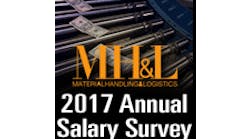TUMWATER, Wash.--In light of the apparent carbon monoxide poisoning of employees of a Westport seafood company on October 7, 2008, the Department of Labor & Industries (L&I) reminds everyone about the dangers of this invisible hazard, particularly in enclosed work areas.
“Every fall and winter, we see an increase in these incidents,” says Steve Cant, assistant director for L&I’s Division of Occupational Safety and Health. “The exposures may involve large numbers of workers in a single incident.”
The most common workplaces for carbon monoxide exposures are storage facilities, warehouses, cold-storage facilities, and fruit, vegetable and seafood packing sheds that use gas or propane lift trucks or other equipment, and in enclosed construction sites or workrooms with portable gas heaters.
At the Westport company, Ocean Gold Seafoods, two dozen workers became ill early the morning of October 7 and were taken to the hospital to be treated for carbon monoxide poisoning. L&I is investigating.
Carbon monoxide gas is colorless, tasteless, odorless and non-irritating and cannot be detected by any of the senses. Because it is not readily detected, employees can be exposed to very high levels without realizing there is a problem. Symptoms include headache, nausea, dizziness, visual disturbance and rapid breathing. A person may feel weak and disoriented, making it difficult to get help. Most people recover completely, but in severe cases, symptoms can persist for many weeks or even months, or there can be permanent brain damage or damage to the heart, or death.
Carbon monoxide is produced by all internal combustion engines, including diesel and propane-powered engines, generators, heaters, natural gas cooking units, portable equipment that burns fuel, and motor vehicles. Outdoor use of any of this equipment is not usually hazardous, but in buildings or enclosed spaces, carbon monoxide can quickly build up to dangerous and even deadly amounts.
L&I offers training resources to help employers prevent carbon monoxide poisoning from lift trucks, heaters and other sources. Visit www.Lni.wa.gov and search for “carbon monoxide,” for posters, publications and other resources to help maintain a safe and healthy workplace.
Employers who need help assessing their workplace hazards can call L&I for a free safety consultation from a professional consultant who will visit the workplace and perform a hazard assessment review. There’s no charge for the consultation and no obligation other than to correct serious hazards. The findings are confidential and employers cannot be penalized.

